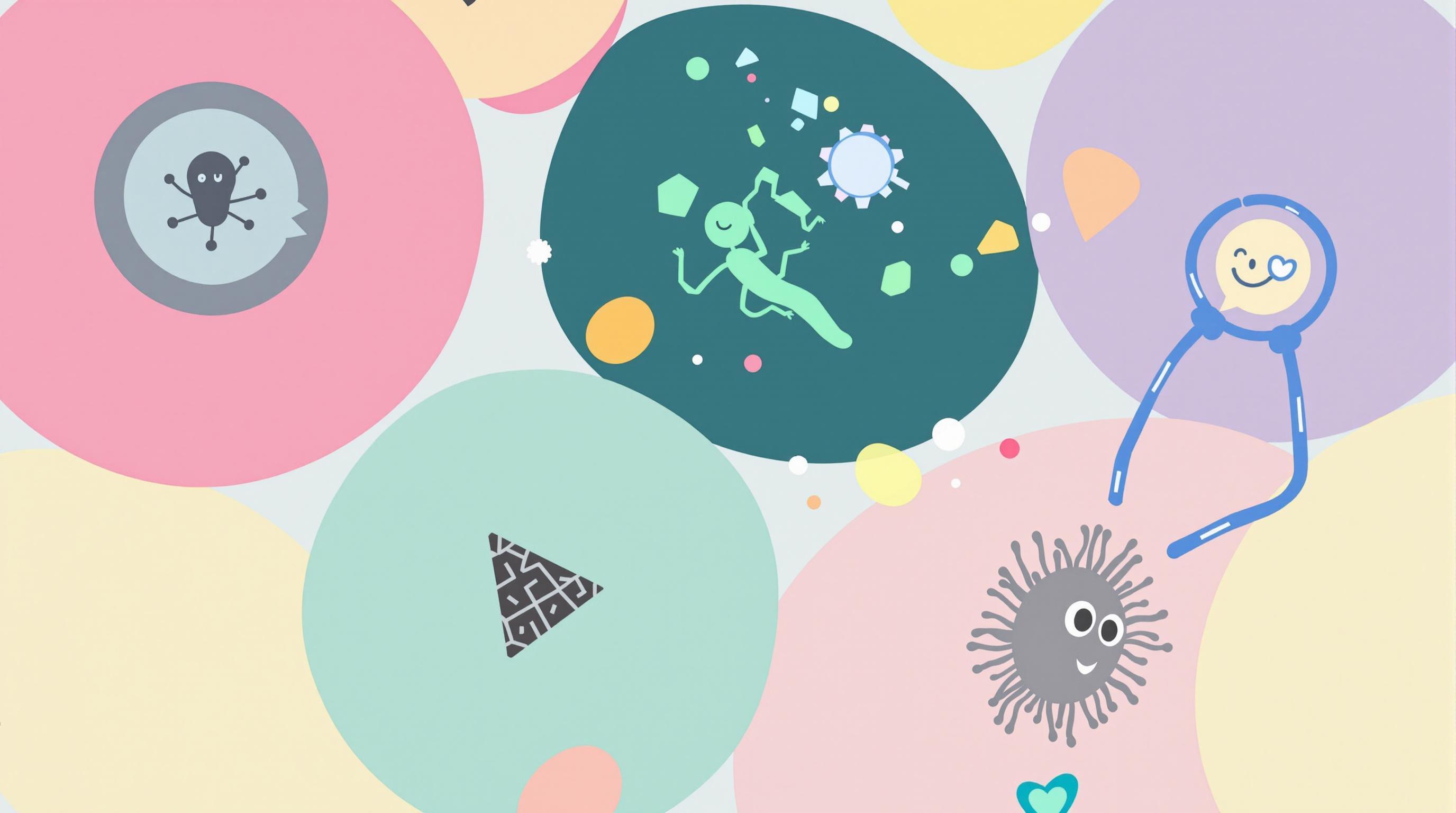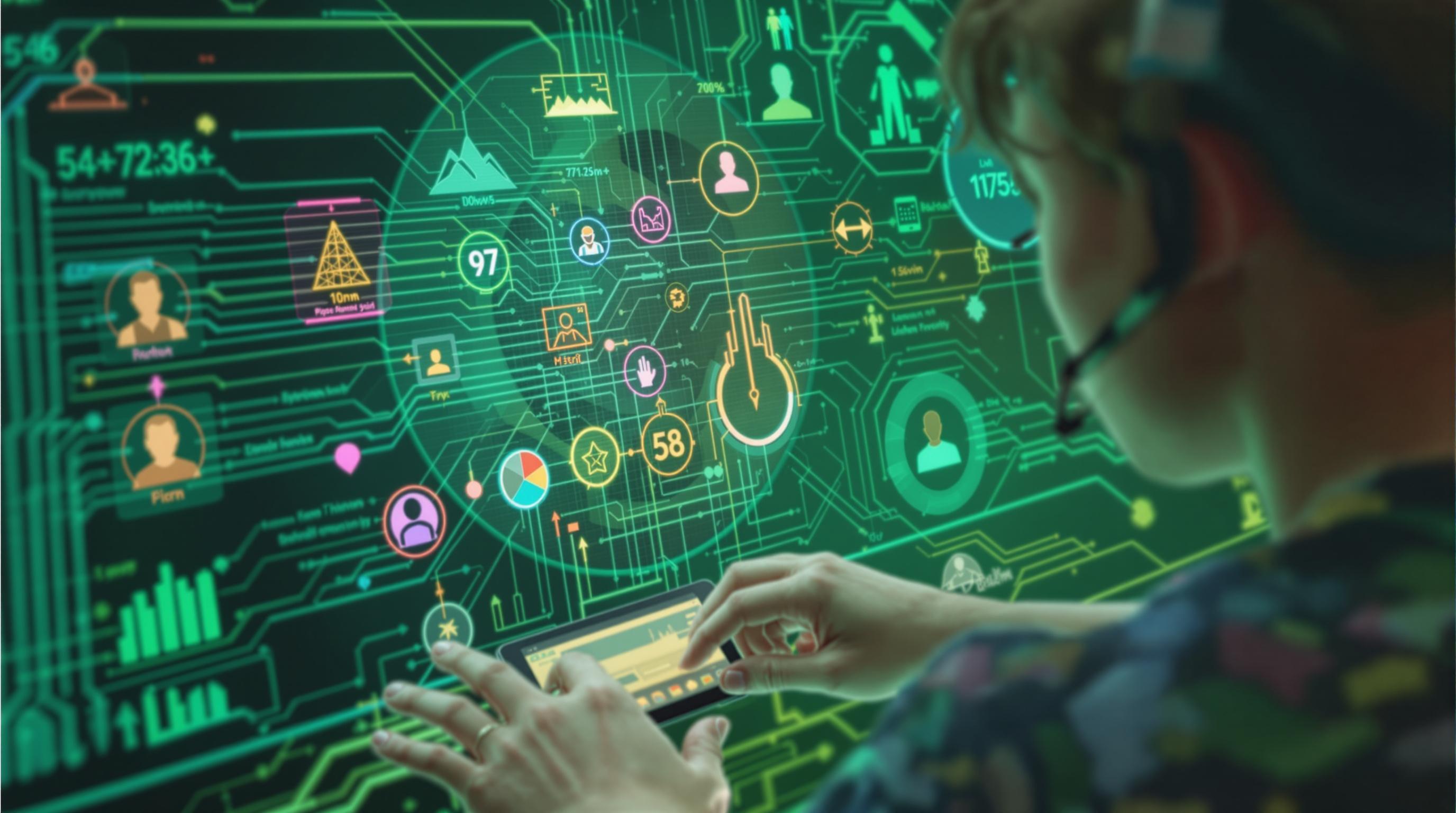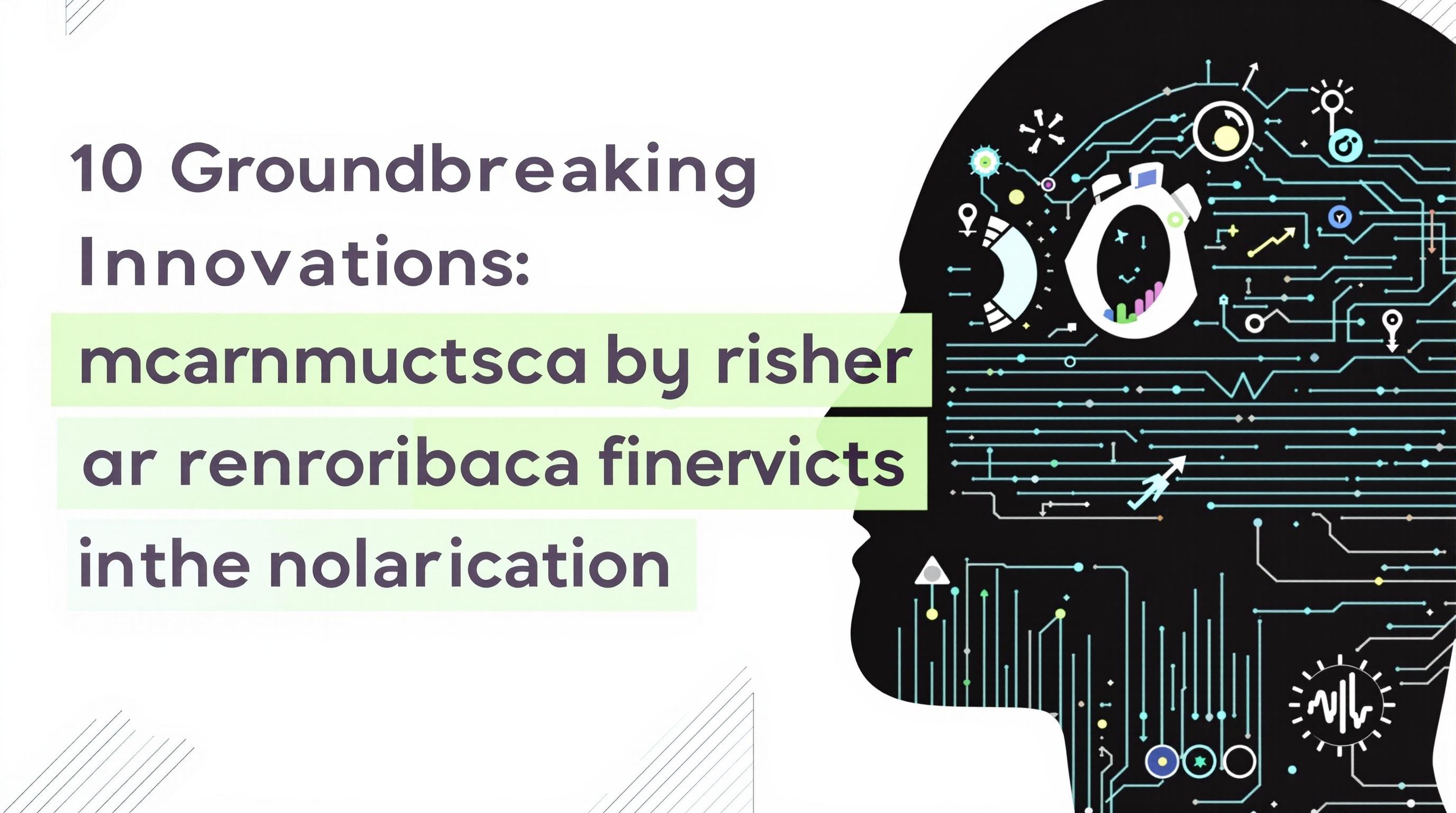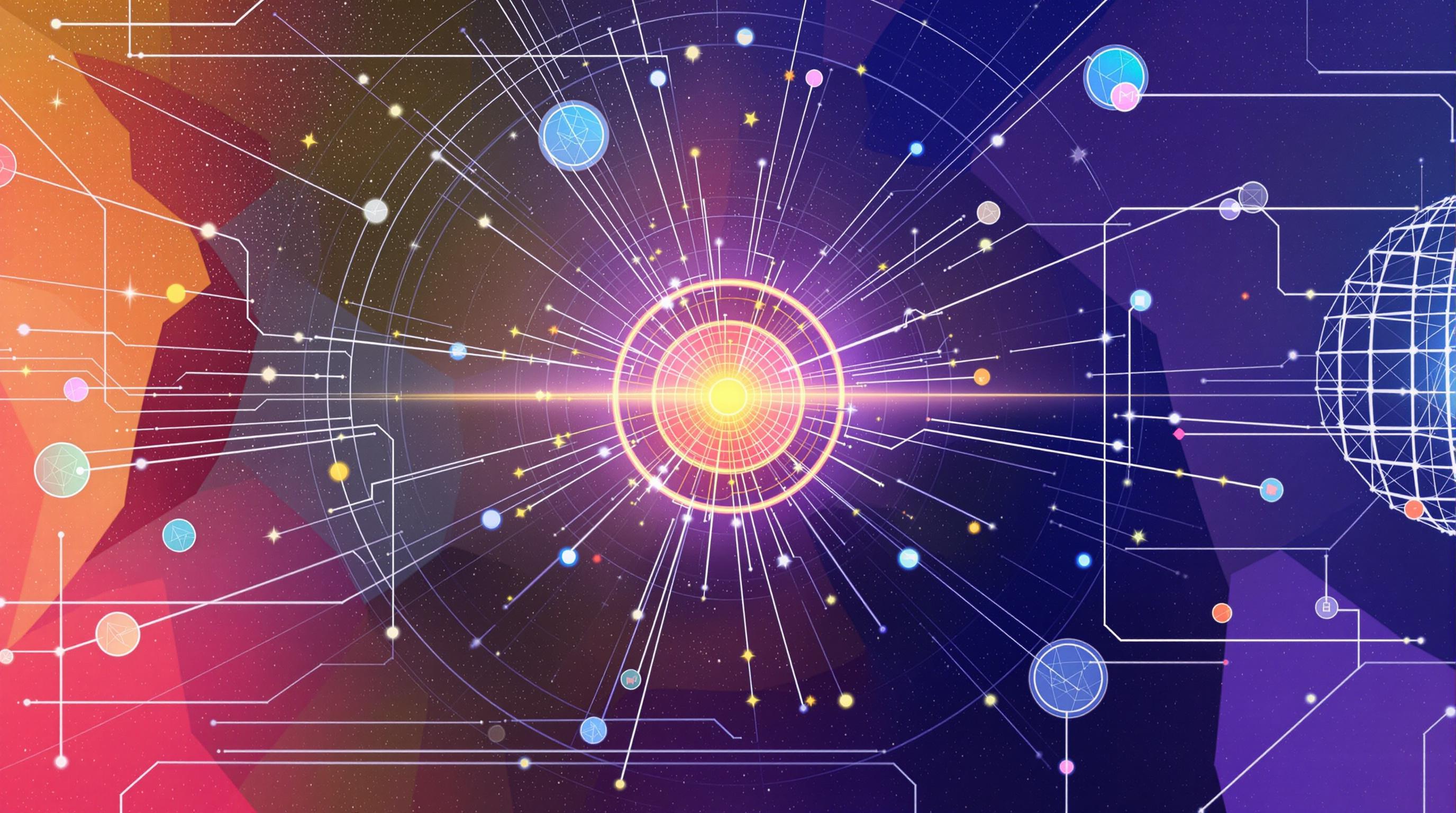Related Articles
- Uncharted Frequencies: The Surprising Role of Subcultures in Shaping Global Digital Landscapes
- Wired Whims: The Unexpected Role of Niche Online Communities in Shaping Global Digital Trends
- Fragmented Signals: Exploring the Shadows of Digital Divide in Emerging Economies and Its Impact on Global Unity
- Decoding the Invisible: How Microbial Communication Could Revolutionize Digital Interactions
- Cryptic Channels: How Encrypted Messaging Platforms Are Reshaping Trust and Transparency in Online Interactions
- Mysterious Modes: The Rise of Cryptographic Channels in Secret Online Dialogues and Their Hidden Impacts
Decoding the Invisible: How Microbial Communication Could Revolutionize Digital Interactions
Decoding the Invisible: How Microbial Communication Could Revolutionize Digital Interactions
Microbial communication, though unseen, is a flourishing field of research that could radically change the way we approach digital interactions. This article explores the mechanisms of microbial signaling, its potential applications in technology, and how these tiny organisms could help us decode the complexities of communication in a digital world.
The Hidden World of Microbial Communication
Imagine a bustling city where millions of people, although invisible to the naked eye, share information, resources, and warnings about impending dangers. This is the analogy that best describes the world of microbes. Beneath our feet, within our bodies, and even in the air we breathe, tiny microorganisms are engaging in complex communications. They send chemical signals, sometimes referred to as quorum sensing, to coordinate activities and behaviors within their communities. According to a study published in the journal Nature Communications, these interactions may not only govern the behavior of bacteria but could also inspire new methods of communication in the digital realm (Waters & Bassler, 2005).
The Mechanisms of Microbial Signaling
Microbial communication primarily occurs through various signaling molecules that bacteria produce and release into their environments. These molecules can elicit responses from other nearby microbes, informing them about factors such as population density and environmental changes. For instance, when the density of bacteria reaches a certain threshold, they may activate specific genes responsible for bioluminescence or virulence, creating responses that are correlated with their collective state. This concept of "collective behavior" can be likened to a digital network where the actions of one node can influence the entire system.
Learning from Nature: The Digital Age's Next Frontier?
Now, let’s pivot to the implications of microbial communication for our digital interactions. Observing the manner in which these microorganisms communicate might inspire innovative solutions in fields such as computer networking, artificial intelligence, and even social media. If we can harness their methods of signaling, we could develop systems that are not only more efficient but also more responsive. For example, imagine a smart city where traffic signals could communicate directly with vehicles to optimize flow based on real-time data, much like how bacterial cells respond to fluctuations in their environment.
Case Study: The Role of Bacteria in Digital Networks
A fascinating case study can be drawn from the work of bioengineers at MIT, who have successfully genetically modified E. coli to communicate their activities through light signals. This was achieved by leveraging the natural quorum sensing pathways of these bacteria to create a network of fluorescent bacteria that could relay information (Kato et al., 2017). The implications are promising; what if we could develop digital networks that function on similar biological principles? Imagine data packets that could 'talk' to each other in a manner akin to how microbes coordinate responses within their communities!
The Impacts on Artificial Intelligence
As we delve deeper into artificial intelligence, the concept of collective behavior among microbes could lead to the development of smarter algorithms. Much like a bacterial colony that adapts based on external signals, AI systems could be designed to learn from their environment dynamically. A study conducted by researchers at Stanford University demonstrated that algorithms inspired by swarm intelligence could significantly outperform traditional models in solving complex problems (Shoham, 2018). The potential for AI to evolve through a process similar to microbial signaling opens up exciting avenues for enhancing human-computer interactions.
Microbial Communication: The Green Revolution for Tech?
While this conversation harbors an undeniable seriousness, it’s essential to maintain a light-hearted essence, don’t you think? The idea that bacteria could one day help improve our digital interactions makes one wonder: could they also help us scroll through our phones more mindfully? Picture this—microbial feedback loops guiding us to put our phones down and smell the roses. Wouldn’t that be a refreshing take on digital detoxing?
Statistics That Speak Volumes
According to a recent survey conducted by Pew Research Center, 90% of teenagers report feeling overwhelmed by the pressure to stay constantly connected online (Pew Research Center, 2022). That’s a staggering statistic! In light of microbial communication, perhaps harnessing the wisdom of these tiny organisms could lead us to more balanced digital interactions—where we don't just react, but contribute positively to our digital ecosystem.
Digital Interactions: The Benefits of Biological Insights
What are some tangible benefits we can expect from incorporating microbial communication principles into our digital life? For one, they promote efficiency. Using biological signals as a guide for internet traffic management could lead to a more streamlined experience for users, reducing downtime and enhancing real-time interactions. Secondly, these principles champion adaptability. As microbes constantly adapt based on their environment, our digital platforms could learn to respond to user preferences and trends in an organic manner, leading to a more personalized experience. Imagine technology that thinks and feels—but without the existential crisis!
The Future: What Lies Ahead?
As the quest for understanding microbial communication unfolds, researchers are not only examining its benefits for technology but also its implications for the human experience. A case in point is the work of microbiologists who research the gut-brain connection, which has implications for mental health and cognitive function. If the microbial community within our bodies can influence how we interact with technology, then who’s to say that these interactions don’t extend to how we communicate with each other online?
From the Lab to Real Life: Applications Beyond Tech
But it’s not just technology that could be transformed. Consider the realm of healthcare, where understanding microbial communications can lead to innovative treatments. For example, probiotics have long been known to promote gut health, but future therapies could involve engineered microbes that serve as real-time monitors of health status, sending alerts to physicians about any significant changes. This might lead to a cultural shift in how we think about health information and its dissemination—seamlessly integrating the microbial world into the fabric of human healthcare.
Conversations in the Digital Space
The implications for social media are equally exhilarating. If we can integrate principles of microbial signaling, platforms could become less about the noise of information and more about meaningful connections. Imagine a world where each interaction helps calibrate the environment based on collective input. This could potentially reduce the polarization we often see online, as platforms would adapt to create more harmonious dialogues and discussions.
Bringing It All Together: A Call to Action
With all these possibilities ahead, there is a clear call to action for researchers, technologists, and even casual users of digital platforms: embrace the microbial revolution! While it may sound whimsical, integrating the wisdom of microorganisms into our digital frameworks could lead us to a more efficient, adaptive, and harmonious digital realm. The first step is fostering interdisciplinary collaborations between biologists, computer scientists, and social scientists to create the platforms that will define our future.
In Conclusion: The Microbial Advantage
As we move forward in this digital age, let’s pay homage to the invisible yet impactful world of microbes that could reshape our understanding of communication. The next time you scroll through your feed or send a message, remember the tiny organisms that are not only part of our lives but could very well redefine the way we connect and interact in the digital space. In a world dominated by technology, microbial communication reminds us of the organic roots of connection—tiny, profound, and ultimately transformative.





